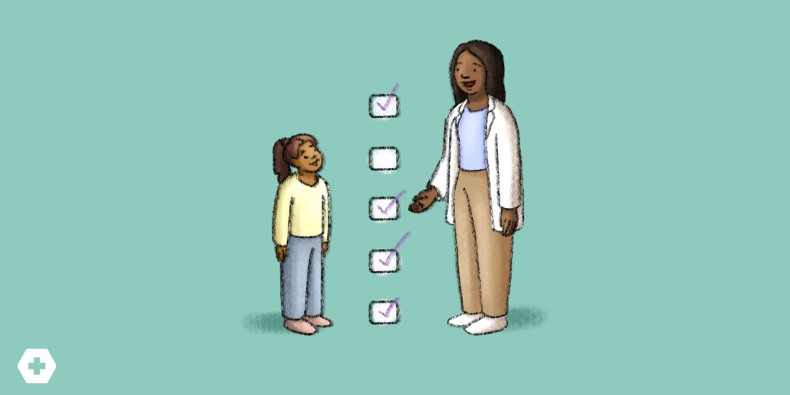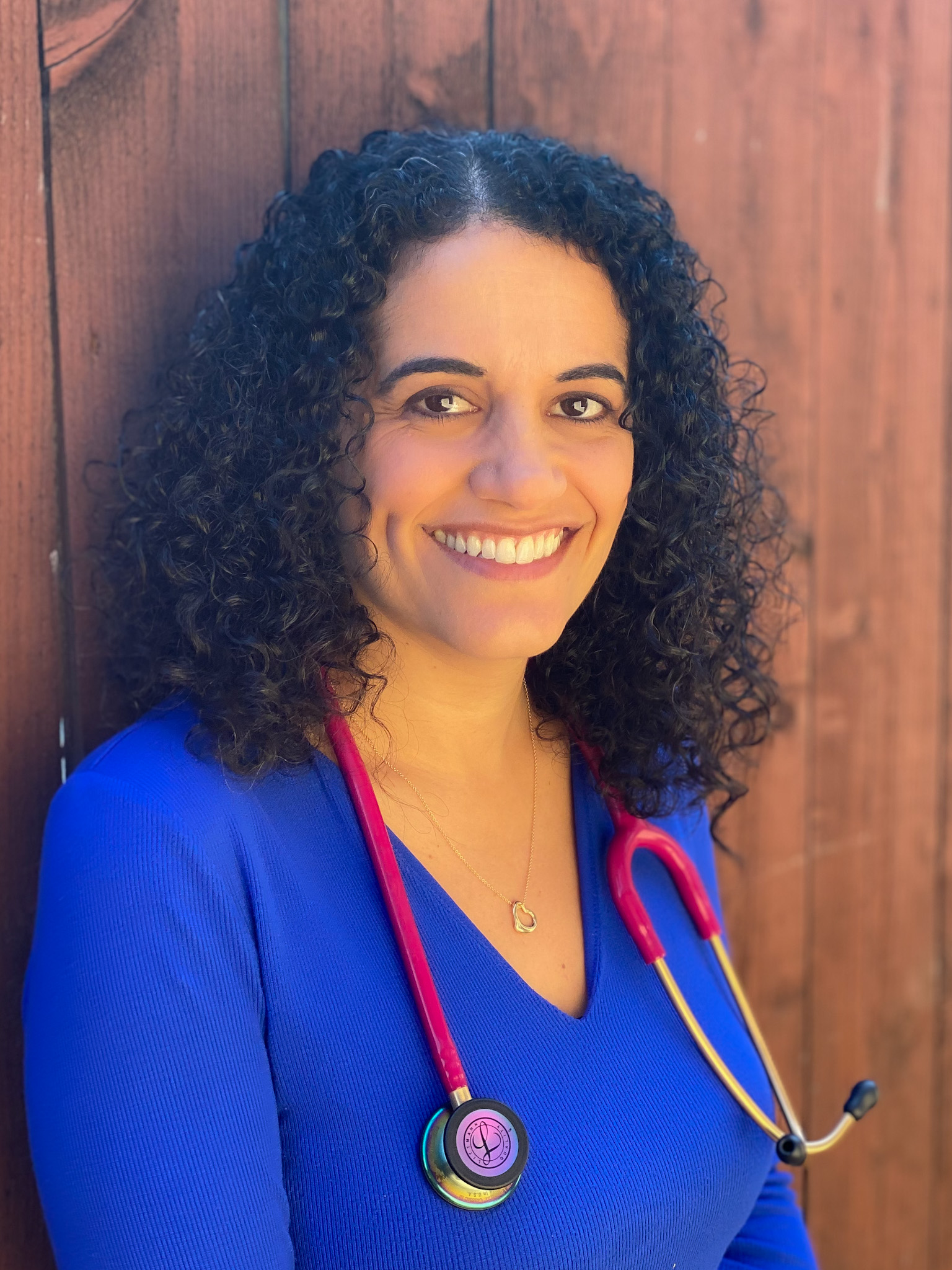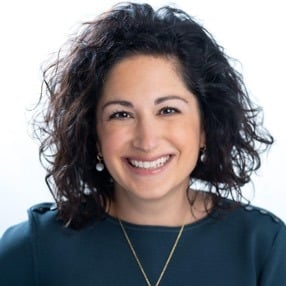
Autism Diagnoses Are Rising. But What Does That Really Mean? A Pediatrician’s Perspective.

You’ve probably seen the headlines: Autism rates are rising. You might have heard it called an epidemic—a term that’s not just attention-grabbing, but also fuels fear and confusion. Parents might be asking you about this in clinic. Many argue that the rise in diagnoses just means we’re getting better at identifying what has always been there. Others feel the alarm bells ringing, wondering what’s causing this apparent surge.
And some believe that we need to change the way we talk about autism entirely. The neurodiversity movement advocates for the perspective that autism isn’t something to fear, but rather a natural variation in human neurodevelopment that we should embrace. And that’s true even if more kids are being diagnosed today than before.
So how can we make sense of the numbers?
As a pediatrician, I know I’m not alone in this experience: Sometimes, during the process of diagnosing a young child with autism, I realize the apple doesn’t fall far from the tree. A parent realizes that their own lifelong quirks and struggles have a name. That parent was never included in the statistics. Instead, they grew up with undiagnosed and untreated autism. Their story helps explain the rising numbers, because part of today’s increase reflects all the people we overlooked a generation ago.
Just how much have the numbers changed? According to the CDC, about 1 in 31 children in the U.S. is now diagnosed with autism spectrum disorder (ASD)—an increase of about 380% from 20 years ago. So are we just getting better at recognizing autism, or are more children actually developing it?
The answer is likely both.
Many experts agree that the increase mainly reflects progress: better screening, expanded criteria, greater awareness, and a long-overdue push to recognize autism in more communities. And while researchers continue to explore contributing factors, there’s one thing the science makes clear: vaccines are not one of them.
Why Are Autism Rates Increasing?
Let’s start with the basics. Autism spectrum disorder (ASD) is a neurodevelopmental condition marked by differences in social communication and by restricted or repetitive behaviors.
There’s a saying in the autism community:
If you’ve met one child with autism… you’ve met one child with autism.
It’s called a spectrum because symptoms vary widely, from children who are minimally verbal to those who speak fluently but struggle with more nuanced social interactions.
Let’s break down what’s behind the rising rates.
We’re Doing a Better Job at Screening for Autism
Thanks to the American Academy of Pediatrics (AAP) autism screening guidelines, most children are now screened for autism at 18 and 24 months using standardized tools like the M-CHAT-R or POSI, alongside routine developmental surveillance. Pediatricians are increasingly tuned into early red flags, like a child not responding to their name by 9 months or not pointing to show interest by 15 months.
The result? More children are being identified early, which means more are receiving the support they need.
The Diagnostic Criteria for Autism Have Expanded
The DSM-5 criteria for autism diagnosis have evolved, reflecting a broader understanding of the spectrum. What was once known as Asperger’s syndrome is now included within ASD. Before the 2013 DSM-5 update, children couldn’t be diagnosed with both ADHD and autism—now, we recognize these conditions often occur together.
That shift means more individuals, especially those with milder traits, meet the criteria. Many of them might have been overlooked or misdiagnosed in the past. Some studies suggest that as autism diagnoses increase, rates of “intellectual disability” have decreased—suggesting children may now be receiving more accurate labels.
There’s More Awareness—and Less Stigma
Parents, educators, and clinicians are better informed than ever before. Many families now seek evaluations proactively. As stigma decreases, more parents feel safe exploring a diagnosis. There’s also more awareness that the right diagnosis can get a child access to the right interventions.
We’re Reaching More Diverse and Underserved Populations
Historically, mainly due to issues with access, White children, especially boys, were more likely to be diagnosed than children from Black, Hispanic, Asian, or lower-income families. But that’s starting to change. Since 2020, children from minority groups are more likely to be diagnosed with autism than white children. As access improves and clinicians become more culturally aware, ASD diagnoses are becoming more equitable.
Autism has also been a condition that traditionally involves boys more than girls. Females are more likely to be diagnosed later in life and more likely to remain undiagnosed. That may be changing. The male: female ratio used to be 4:1. Now it’s 3:1. While there may indeed be a sex-based link with autism, females seem to be better at masking their symptoms. Learning how to identify high-masking individuals has also shifted the stats.
More Children May Be Developing Autism Than Before
While many of the rising numbers can be explained by better identification, it probably does not explain all of it. Certain factors — like rising paternal age — have been identified as contributing to increased autism rates.
This isn’t an exhaustive list, but some factors that may play a role in increasing autism rates include:
-
Air pollution: Some studies have found that autism rates rise with increased exposure to fine particulate matter.
-
Increased parental age: Advanced parental age is an established risk factor for autism. With a growing trend of delayed parenthood, this can affect overall autism rates.
-
Prenatal factors: Drug exposure, infections, and other factors during pregnancy can increase autism rates.
-
Gene-environment interactions: Autism is strongly linked to genetics. Some twin studies suggest genetics alone accounts for 83 to 90% of autism cases. But there are still environmental effects at play as well.
There’s still a lot to learn—but one theory that’s been thoroughly debunked is the idea that vaccines cause autism. Numerous large, well-designed studies have shown no link between vaccination and autism.
Diagnosing Autism in Primary Care: Yes, You Can Diagnose It
All of this puts pediatricians in a unique position. We’re often the first to hear a parent’s concerns—and in many cases, we can be the ones to make the diagnosis.
With all this talk about increased screening and diagnosis, you might think that we’ve streamlined the process and children with autism are getting diagnosed early and smoothly. Unfortunately, that’s often not the case.
In the November 2024 episode of Peds RAP, "Autism Screening and Diagnosis," I sat down with Dr. Susana Myers, a general pediatrician who now specializes in autism evaluations. She shared that the average age of diagnosis is four years. And that’s true even though many of these children have been screened as high risk for autism much earlier.
We talked about how we, as general pediatricians, are qualified to diagnose Autism in primary care. Most of us refer to a developmental specialist or other expert to make the official diagnosis. But we can become empowered to make the diagnosis of autism in our medical home.
A few takeaways from our discussion:-
-
Autism screening tools like the M-CHAT-R and STAT can be used to flag concerns. Others, like the ADOS-2, require training but can be used to make the diagnosis.
-
-
If your patient fits the DSM V criteria and you use an assessment tool to document that they fulfill those criteria, you can make the diagnosis.
-
In most states, a pediatrician’s autism diagnosis is enough to qualify the student for medical services such as PT and OT, and educational services like a 504 or IEP plan. However, for ABA therapy, many insurance companies require a specialist (like a developmental pediatrician or neuropsychologist) to make the diagnosis.
-
Genetic testing recommendations for autism advise that all children diagnosed with autism should have genetic testing (including Fragile X and chromosomal microarray).
-
SPARK is an autism research study that provides participants with free genetic testing if they are interested. To be eligible to join the study (and access the genetic testing), individuals must have a formal diagnosis of ASD.
Early identification matters. The sooner we connect families to services, the better the outcomes. Even though rates of ASD are on the rise, the diagnosis is still delayed for many children.
The AAP has some great resources for making the diagnosis in the medical home. If you’re still feeling intimidated by the thought of diagnosing autism yourself, we’ve got you covered. Check out our podcast episode for more helpful tips.
Practice-Changing Education
Experience education that goes beyond theory. Explore Hippo Education’s offerings below.




